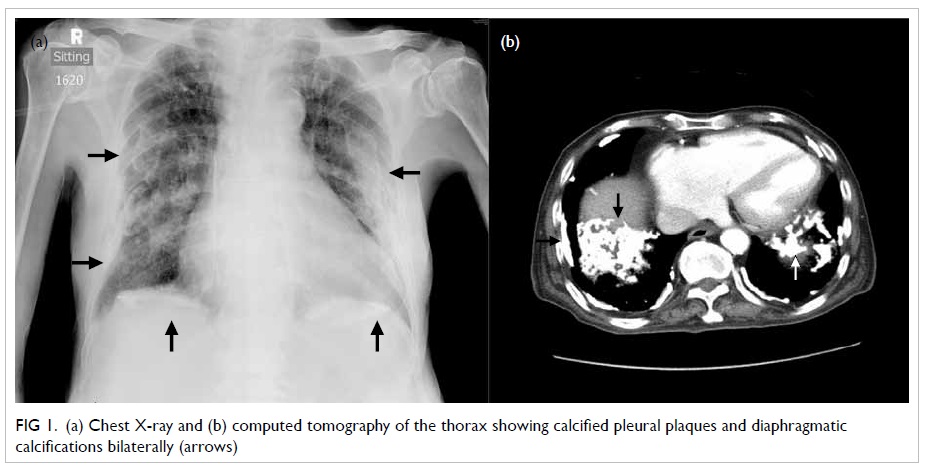One interesting study is called, +Insulation workers in
Belfast. A further study of mortality due to the asbestos exposure (1940-75). +
- Br J Ind Med 1977;34:174-180 + by P C Elmes, M J Simpson. The following is an
excerpt: +Abstract - A follow-up study of 162 men already doing its job as
insulators (laggers) in 1940 has been extended from 1965 to 1975. Towards the
end of 1975 there were 40 survivors when 108 had been expected. Until 1965
there was an overall excess of deaths; these were due to asbestosis without or
with tuberculosis the actual alimentary cancer, as well as to bronchial
carcinoma and mesothelioma cancer. From 1965 onwards the overall death rate
among survivors isn't so excessive but can be still a marked excess of deaths
from bronchial cancer and mesothelioma. The continued risk of death because of
malignancy after asbestosis had ceased to contribute directly, does not appear
for you to become caused by any changes which occurred before 1940 in the
circumstances at accomplish the task.
 |
Asbestosis Tuberculosis And Alimentary Cancer |
Another interesting study is called, +Frequency of sister
chromatid exchange and chromosomal aberrations in asbestos cement workers.+ -
Br J Ind Med 1991;48:103-105 by N Fatma, A K Jain, Q Rahman + Abstract
+Exposure to asbestos minerals is associated using a wide regarding adverse
health effects including lung cancer, pleural mesothelioma, and cancer of other
organs. Diet plans. Shown previously that asbestos samples collected from your
neighborhood asbestos factory enhanced sister chromatid exchanges (SCEs) and
chromosomal aberrations in vitro using human lymphocytes. In the present study,
22 workers from the same factory and 12 controls were further investigated.
Controls were matched for age, sex, and socioeconomic lay claim. The peripheral
blood lymphocytes were cultured and harvested at 2 days for studies of
chromosomal aberrations and 72 hours for SCE frequency determinations. Asbestos
workers had a raised mean SCE rate and increased amounts of chromosomal
aberrations compared along with a control number. Most of the chromosomal
aberrations were chromatid gap and break types.
Another interesting study is called, +Asbestos-Induced
Pleural Disease+ - Clinics in Chest Medicine, Volume 19, Issue 2, Pages 311-329
by S.Nishimura, Versus.Broaddus. Here is an excerpt: +Abstract - Asbestos, for
unknown reasons, has a rare affinity for the pleura. The manifestations of
asbestos-induced pleural disease are multiple and varied, from effusion to
fibrosis to malignancy. Certain types of pleural disease, for pleural plaques,
are nearly specific for asbestos exposure, whereas others, such as
asbestos-induced pleural effusion, are difficult to identify unequivocally as
asbestos-related.
Although much progress on important mechanisms of
asbestos-cellular interactions has been achieved, source of pleural disorders
remains unknown. Furthermore, the relationship of the various pleural
conditions with additional and an issue pulmonary manifestation of asbestosis
and cancer of the lung are not understood. In this particular article, we
attempt to focus to the newer studies that offer answers to some of concerns
above. We refer readers to recent reviews on asbestos-related pleural
disease.26, 32, 43 and 52+
Another study is called, +pulmonary fibro genesis after
three consecutive inhalation exposures to chrysotile asbestos+ by PG Coin, AR
Osornio-Vargas, VL Roggli and AR Brody - Morning. J. Respir. Crit. Care Med.,
Vol 154, No. 5, 11 1996, 1511-1519. Here can be an excerpt: +Previously, this
laboratory developed a model of asbestos-induced pulmonary fibro genesis in
rats and mice after a brief (1 to 3-h) inhalation exposure. However, typical
human environmental exposures would be repeated, although at lower
concentrations compared to those used our own animal brand. Here we have
extended this model to encompass repeated exposures and consequent long-term
effects. Groups of rats were exposed to chrysotile aerosol (10 mg/m3) for 3- to
5-h periods over 3 consecutive days.
Lung fiber burden and pathologic features
were studied for as long as 6 mo after your exposure. We found that quite a lot
of the longest (> or = 8 microm) fibers were retained in the lung of at
least 6 mo, whereas shorter fibers were cleared a lot quicker. The three
exposures to chrysotile caused a great increase in DNA synthesis in the
epithelium of terminal bronchioles and more proximal breathing passages. When
compared with just a single exposure, the triple exposure caused an enhanced
inflammatory response and also a prolonged period of increased DNA synthesis
your proximal alveolar region. Hyperplastic, fibrotic lesions subsequently
coded in the same region and persisted a minimum of 6 mo after protection.
These findings will be valuable in directing future studies of the mechanisms
of pulmonary fibrosis in this model.
If you found all of these excerpts interesting, please read
the studies within their entirety. All of us owe a debt of gratitude on these
fine people.
